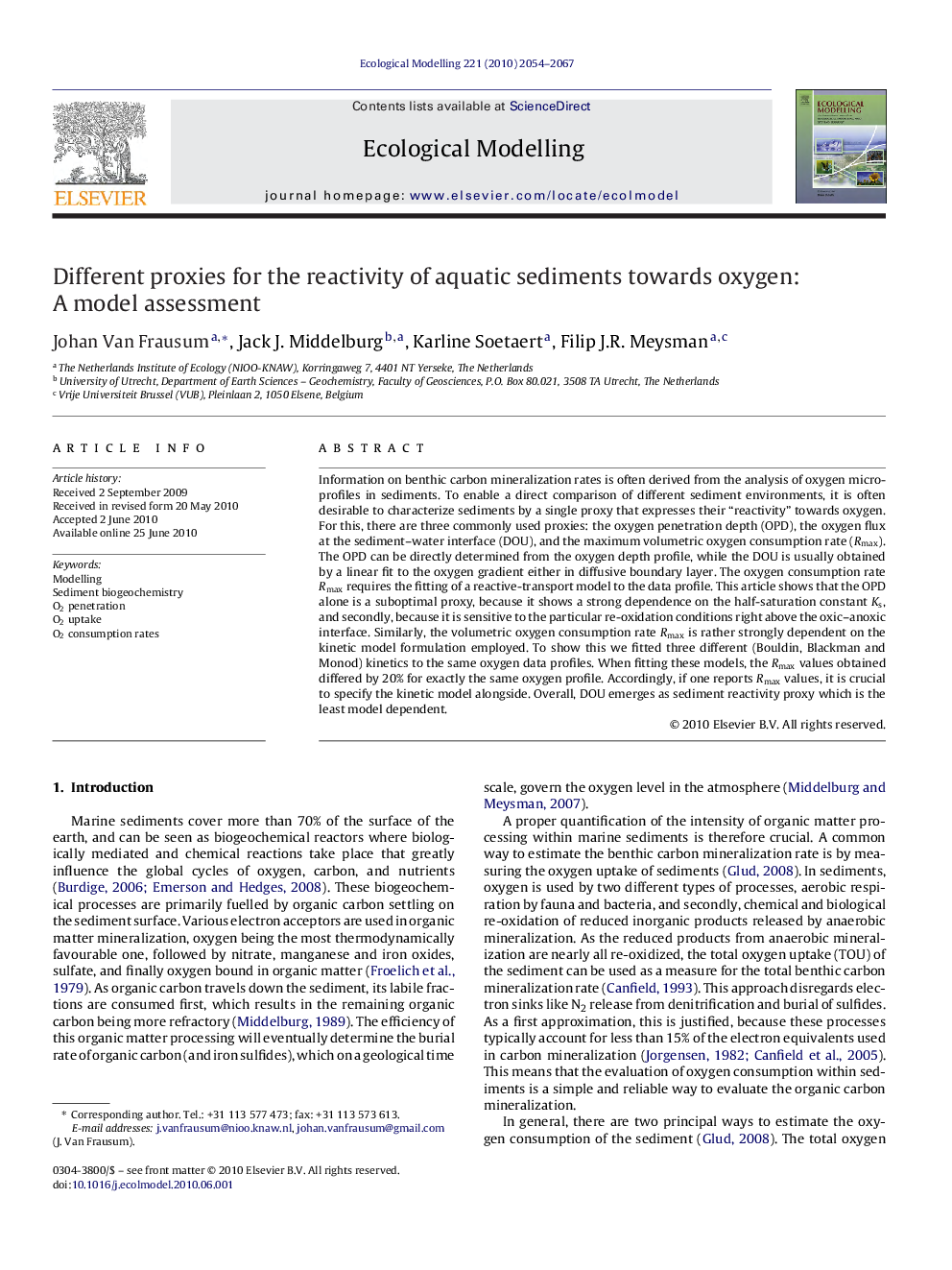| Article ID | Journal | Published Year | Pages | File Type |
|---|---|---|---|---|
| 4377309 | Ecological Modelling | 2010 | 14 Pages |
Abstract
Information on benthic carbon mineralization rates is often derived from the analysis of oxygen microprofiles in sediments. To enable a direct comparison of different sediment environments, it is often desirable to characterize sediments by a single proxy that expresses their “reactivity” towards oxygen. For this, there are three commonly used proxies: the oxygen penetration depth (OPD), the oxygen flux at the sediment-water interface (DOU), and the maximum volumetric oxygen consumption rate (Rmax). The OPD can be directly determined from the oxygen depth profile, while the DOU is usually obtained by a linear fit to the oxygen gradient either in diffusive boundary layer. The oxygen consumption rate Rmax requires the fitting of a reactive-transport model to the data profile. This article shows that the OPD alone is a suboptimal proxy, because it shows a strong dependence on the half-saturation constant Ks, and secondly, because it is sensitive to the particular re-oxidation conditions right above the oxic-anoxic interface. Similarly, the volumetric oxygen consumption rate Rmax is rather strongly dependent on the kinetic model formulation employed. To show this we fitted three different (Bouldin, Blackman and Monod) kinetics to the same oxygen data profiles. When fitting these models, the Rmax values obtained differed by 20% for exactly the same oxygen profile. Accordingly, if one reports Rmax values, it is crucial to specify the kinetic model alongside. Overall, DOU emerges as sediment reactivity proxy which is the least model dependent.
Related Topics
Life Sciences
Agricultural and Biological Sciences
Ecology, Evolution, Behavior and Systematics
Authors
Johan Van Frausum, Jack J. Middelburg, Karline Soetaert, Filip J.R. Meysman,
